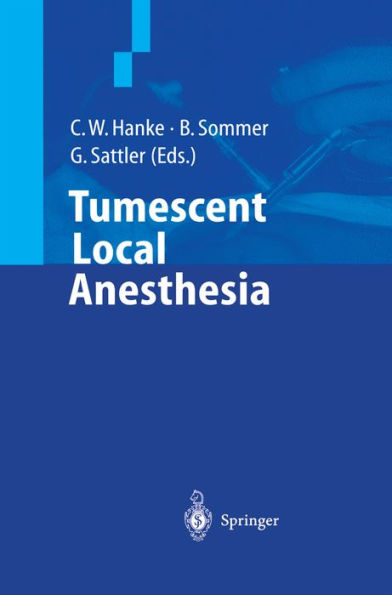It is safe to say that without Jeffrey Klein, who first described tumes cent local anesthesia, this book would never have been written. This technique of local anesthesia, originally designed for use in outpatient liposuction procedures in the United States of America, was intro duced into clinical practice in Darmstadt in 1990 and is now employed in a growing number of areas of surgical dermatology. Eight years of experience have shown it to be a particularly elegant and safe method of local anesthesia, especially in the treatment of large areas of skin. A large number of scientific studies have improved our under standing of tumescent local anesthesia. The administration of large quantities of a dilute local anesthetic into lipophilic tissue is no longer seen as a risk to the patient, although further discussion at the inter national level will be required over the next few years in order to standardize the tumescent solution. Until then, the widely varying dosages reported around the world should be regarded with caution. The progress made and experience gained in recent years make it likely that tumescent local anesthesia will become firmly established in all branches of surgery. One important factor is the economy of the tumescent technique, the material costs of which are very low. In comparison to general anesthesia, enormous savings can be made in the costs of postopera tive care,owing to reduced staff requirements and fewer complications of wound healing.
"1101672880"
Tumescent Local Anesthesia
It is safe to say that without Jeffrey Klein, who first described tumes cent local anesthesia, this book would never have been written. This technique of local anesthesia, originally designed for use in outpatient liposuction procedures in the United States of America, was intro duced into clinical practice in Darmstadt in 1990 and is now employed in a growing number of areas of surgical dermatology. Eight years of experience have shown it to be a particularly elegant and safe method of local anesthesia, especially in the treatment of large areas of skin. A large number of scientific studies have improved our under standing of tumescent local anesthesia. The administration of large quantities of a dilute local anesthetic into lipophilic tissue is no longer seen as a risk to the patient, although further discussion at the inter national level will be required over the next few years in order to standardize the tumescent solution. Until then, the widely varying dosages reported around the world should be regarded with caution. The progress made and experience gained in recent years make it likely that tumescent local anesthesia will become firmly established in all branches of surgery. One important factor is the economy of the tumescent technique, the material costs of which are very low. In comparison to general anesthesia, enormous savings can be made in the costs of postopera tive care,owing to reduced staff requirements and fewer complications of wound healing.
66.99
In Stock
5
1

Tumescent Local Anesthesia

Tumescent Local Anesthesia
eBook (2001)
$66.99
$89.00
Save 25%
Current price is $66.99, Original price is $89. You Save 25%.
Related collections and offers
66.99
In Stock

Product Details
| ISBN-13: | 9783642567445 |
|---|---|
| Publisher: | Springer-Verlag New York, LLC |
| Publication date: | 12/06/2012 |
| Sold by: | Barnes & Noble |
| Format: | eBook |
| File size: | 60 MB |
| Note: | This product may take a few minutes to download. |
About the Author
From the B&N Reads Blog
